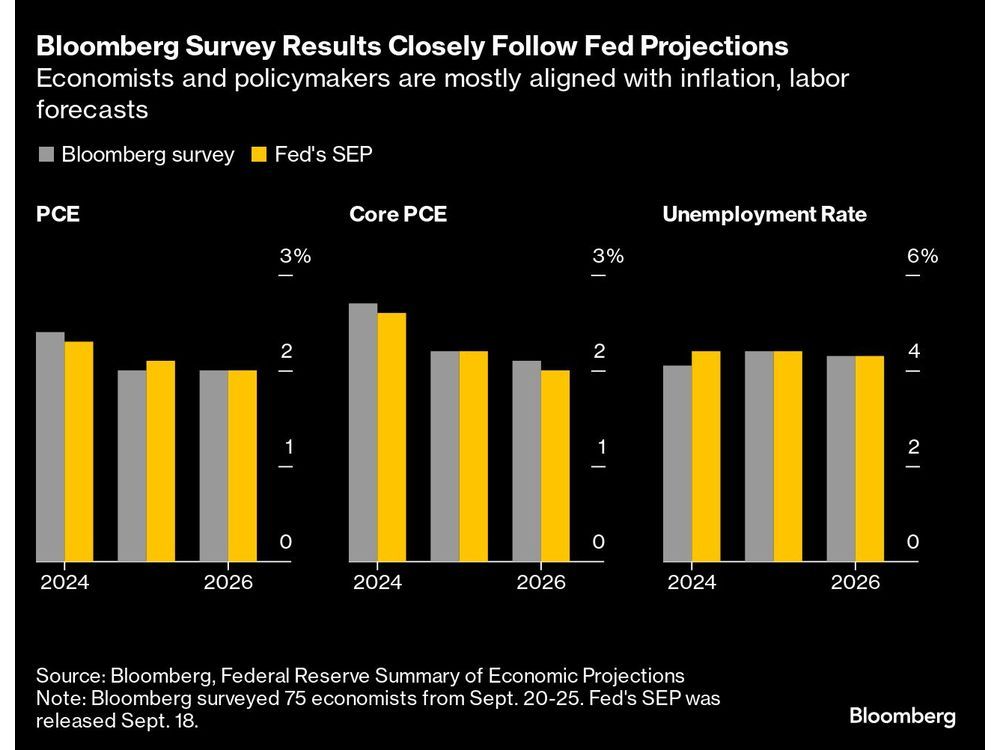
Article content
(Bloomberg) — Economists see US inflation reaching the Federal Reserve’s target early next year while the unemployment rate picks up slightly, closely following the central bank’s own updated projections released last week.
The Fed targets 2% price growth based on the annual personal consumption expenditures price index, and forecasters in the latest Bloomberg monthly survey see the gauge averaging that pace in the first quarter. In August, they expected the metric would hit the Fed’s goal in the second quarter.
Article content
In tandem with last week’s interest-rate reduction, Fed officials also published new economic forecasts. While those aren’t broken out by quarter, they show the PCE gauge averaging 2.1% in 2025 and ticking down to 2% the following year.
The Fed unveiled its 50-basis-point rate cut and projections on Sept. 18, and Bloomberg’s survey of 75 economists was conducted from Sept. 20 to 25. Policymakers as well as economists in the poll see another half point of reductions by year end.
They’re also in agreement with their expectations for the PCE price index that excludes food and fuel, the Fed’s favored measure of underlying inflation. Both see the so-called core gauge averaging 2.2% next year and dipping into 2026.
“Our forecasts are broadly in line with what the Fed is indicating,” said James Knightley, chief international economist at ING Financial Markets. “Nonetheless we certainly acknowledge that the jobs market outlook is concerning and the risks are indeed skewed to the Fed having to do more, more quickly.”
In August, the PCE index rose 2.2% from a year earlier, and 2.7% excluding food and energy, according to Bureau of Economic Analysis data out Friday.
Article content
When it comes to the unemployment rate, economists and Fed officials both project a 4.4% average in 2025 before ticking down the following year. The jobless rate stood at 4.2% in August and is expected to hold steady in September ahead of government data to be released next week.
Economists project a series of interest-rate cuts that will put the federal funds rate in a range of 3%-3.25% by the December 2025 meeting. That represents 1.25 percentage points of cuts over the course of next year, whereas Fed officials penciled in 1 point.
While forecasters trimmed odds of a US recession over the next year to 30% from 31.5%, the economy is expected to shift into a slower gear by the end of this year. Gross domestic product will average 1.8% in 2025 after an expected 2.6% this year, while the Fed sees GDP holding at 2% from 2024 to 2026.
Share this article in your social network